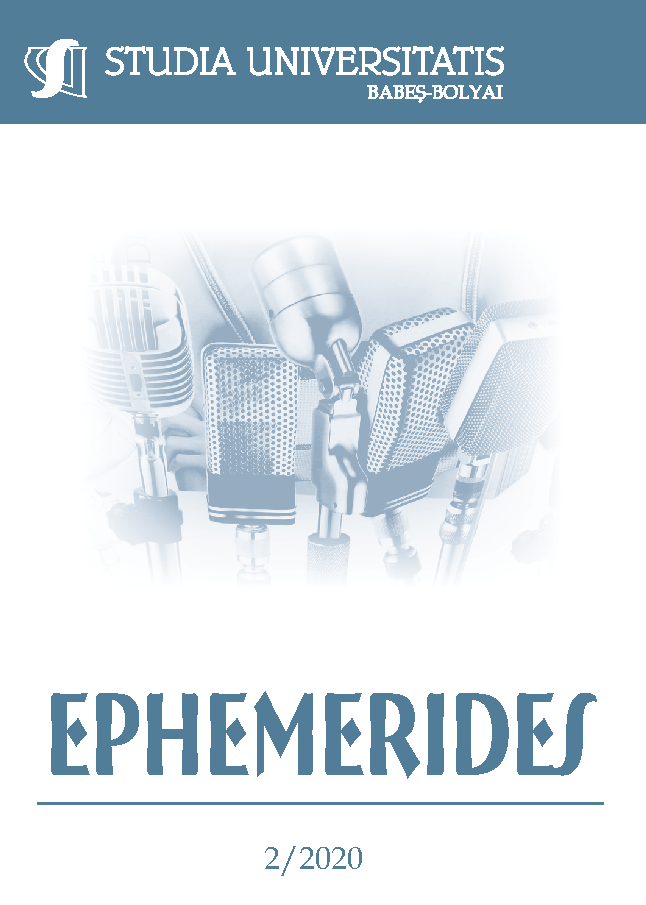HOW SOCIAL COMPARISON ON INSTAGRAM AFFECTS WELL-BEING. PERSPECTIVES FROM A STUDY CONDUCTED DURING THE LOCKDOWN
DOI:
https://doi.org/10.24193/subbeph.2020.2.01Keywords:
social media, well-being, Instagram, social comparison, COVID-19 pandemic.Abstract
During the Spring of 2020 amid the COVID-19 pandemic, several countries ordered lockdowns. The limitations of movement contributed to the rise of social media activity. The present research focused on how the active use of Instagram had an impact on well-being during the first lockdown in Romania. Aiming to explore how active Instagram use contributes to users' self-esteem, satisfaction with life, and loneliness during an unprecedented situation of a lockdown, we conducted an online survey in April 2020 on young adults (N=411) in Romania. Findings showed that actively using Instagram during the lockdown did not have a significant direct impact on self-esteem and satisfaction with life, but significantly decreased loneliness. Upward comparison of Instagram active users contributed to the increase in self-esteem but decreased the values of satisfaction with life and increased loneliness. The downward comparison had no significant impact on self-esteem, satisfaction with life, and loneliness.References
Ahazdeh, A.S., Sharfi, S.P. & Ong, F.S. (2017). Self-schema and self-discrepancy mediate the influence of Instagram use on body image satisfaction among youth. Computers in Human Behaviour, 68, 8-16, doi: 10.1016/j.chb.2016.11.011
Alhabash, S., & Ma, M. (2017). A tale of four platforms: Motivations and uses of Facebook, Twitter, Instagram, and Snapchat among college students?. Social Media+ Society, 3(1), https://doi.org/10.1177/2056305117691544
Chou, H.-T. G., & Edge, N. (2012). "They are happier and having better lives than I am": The impact of using Facebook on perceptions of others' lives. Cyberpsychology, Behavior, and Social Networking, 15, 117–121. doi:10.1089/cyber.2011.0324
Cingel, D.P., & Olsen, M.K., (2018). Getting Over the Hump: Examining Curvilinear Relationships between Adolescent Self-Esteem and Facebook Use, Journal of Broadcasting & Electronic Media, 62:2, 215-231, doi: 10.1080/08838151.2018.1451860
CMR (Colegiul Medicilor din România). (2020, 1 octombrie). Pandemia COVID-19 în România. 7 luni de la primul caz. Autor. https://www.cmr.ro/new/index.php/2020/10/pandemia-covid-19-in-romania-7-luni-de-la-primul-caz/
Diener, E., Emmons, R. A., Larsen, R. J., & Griffin, S. (1985). The Satisfaction With Life Scale. Journal of Personality Assessment, 49, 71–75.
Feinstein, B. A., Hershenberg, R., Bhatia, V., Latack, J. A., Meuwly, N., & Davila, J. (2013). Negative social comparison on Facebook and depressive symptoms: Rumination as a mechanism. Psychology of Popular Media Culture, 2, 161–170. doi: 10.1037/a0033111
Festinger, L. (1954). A theory of social comparison process. Human Relations, 7, 117-140.
Hayes, A. F. (2017). Introduction to Mediation, Moderation, and Conditional Process Analysis, Second Edition: A Regression-Based Approach. The Guilford Press.
IRES. (2020). România #StăAcasă. https://tinyurl.com/
Kalpidou, M., Costin, D., & Morris, J. (2011). The relationship between Facebook and the well-being of undergraduate college students. Cyberpsychology, Behavior, and Social Networking, 14, 183– 189. doi:10.1089/cyber.2010.0061
Kim, J., & Lee, J. E. R. (2011). The Facebook paths to happiness: Effects of the number of Facebook friends and self-presentation on subjective well-being. Cyberpsychology, Behavior, and Social Networking, 14(6), 359–364. doi:10.1089/cyber.2010.0374
Kleemans, D.S., Carbaat, I., & Anschutz, D. (2018). Picture perfect: The direct effect of manipulated Instagram photos on body image in adolescent girls. Media Psychology, 21, 93-110. doi: 10.1080?15213269.2016.1257392
Kross, E., Verduyn, P., Demiralp, E., Park, J., Lee, D. S., Lin, N., & Ybarra, O. (2013). Facebook use predicts declines in sub‐ subjective well‐being in young adults. PLoS ONE, 8(8), 1–6. https://doi.org/10.1371/journal.pone.0069841
Lee, E., Lee, J.-A., Moon, J. H., & Sung, Y. (2015). Pictures speak louder than words: Motivations for using Instagram. Cyberpsychology, Behavior, and Social Networking, 18, 552–556. doi:10.1089/cyber.2015.0157
Lin, L. Y., Sidani, J. E., Shensa, A., Radovic, A., Miller, E., Colditz, J. B., & Primack, B. A. (2016). Association between social media use and depression among U.S. young adults. Depression and Anxiety, 33(4), 323–331. https://doi.org/10.1002/da.22466
Lockwood, P., & Kunda, Z. (1997). Superstars and me: Predicting the impact of role models on the self. Journal of Personality and Social Psychology, 73, 91–103. doi:10.1037/0022-3514.73.1.91
Newberry, C. (2019). 37 Instagram Stats That Matter to Marketers in 2020. https://blog.hootsuite.com/instagram-statistics/
Niera, C. J. B., & Barber, B. L. (2014). Social networking site use: Linked to adolescents’ social self-concept, self-esteem, and depressed mood. Australian Journal of Psychology, 66, 56–64. doi:10.1111/ajpy.12034
Rosenberg, M. (1965). Society and the adolescent self-image. Princeton, NJ: Princeton University Press.
Russell, D. (1996). UCLA Loneliness Scale (Version 3): Reliability, validity, and factor structure. Journal of Personality Assessment, 66, 20-40.
Steinfield, C., Ellison, N. B., & Lampe, C. (2008). Social capital, self-esteem, and use of online social network sites: A longitudinal analysis. Journal of Applied Developmental Psychology, 29(6), 434–445. doi:10.1016/j.appdev.2008.07.002
Van Dijck, J. (2013). The culture of connectivity: A critical history of social media. Oxford University Press.
Vitak, J., & Ellison, N. (2013). "There's a network out there you might as well tap": Exploring the benefits of and barriers to exchanging informational and support-based resources on Facebook. New Media and Society, 15, 243–259. doi: 10.1177/1461444812451566
Whiting, A., & Williams, D. (2013). Why people use social media: a uses and gratifications approach. Qualitative Market Research: An International Journal. http://doi.org/10.1108/QMR-06-2013-0041
Wang, R., Yang, F & Haigh, M.M. (2017). Let me take a selfie: Exploring the psychological effects of posting and viewing selfies and groupies on social media, Telematics and Informatics, 34(4): 274-283. https://doi.org/10.1016/j.tele.2016.07.004.
Zelist. (2020). Overview social media.ro-februarie 2020. Autor. https://www.zelist.ro/blog/overview-social-media-in-ro-februarie-2020./
Downloads
Published
How to Cite
Issue
Section
License
Copyright (c) 2020 Studia Universitatis Babeș-Bolyai Ephemerides

This work is licensed under a Creative Commons Attribution-NonCommercial-NoDerivatives 4.0 International License.



